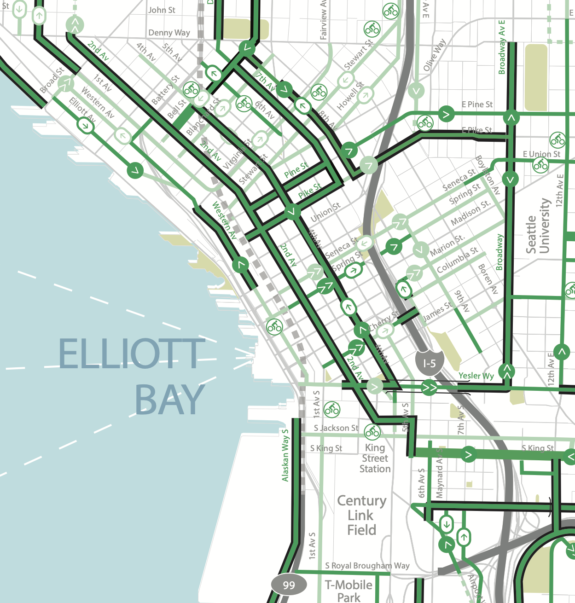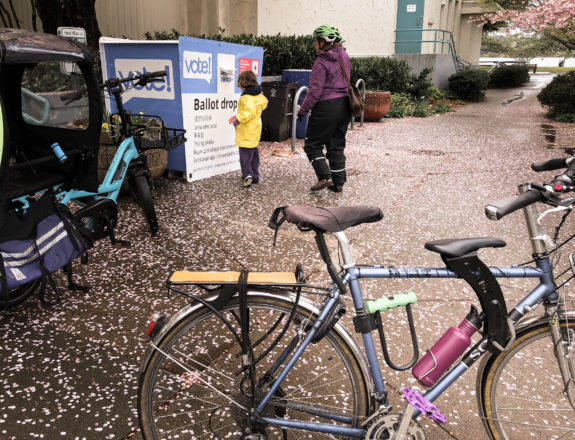
Imagine a street in your neighborhood that is difficult to cross on foot, scary to bike on and/or where buses are constantly getting stuck in car traffic. I know, this was not a difficult imagination exercise. Streets like this are everywhere in Washington State. But when people try to get their city, county or—worst of all—state to make changes to the street that would improve safety and transit reliability, they are often met with resistance from someone within the transportation agency who says such changes are not possible because they would reduce the “level of service” on the street. And for much of the past century, reducing level of service was widely seen as the last thing a traffic engineer or city planner should ever do.
Typical American measurements of level of service only measure car delays, making it a horrible rubric for designing a safe, comfortable and sustainable public street or place. Yet until now, state law required communities to plan around this de facto “car level of service” goal regardless of how it affects people walking, biking or taking transit. Car level of service also has little regard for concerns like fostering strong business districts or safe streets near parks and schools.
Governor Jay Inslee signed HB 1181, a major overhaul of the state’s Growth Management Act. Among other changes, it replaces mentions of “level of service” with “multimodal level of service.” It also completely rewrites the transportation section to include active transportation and transit in sections that previously only pertained to cars. As someone who has spent a lot of time parsing legislative markup texts, seeing references to “traffic” crossed out and replaced with “multimodal transportation demand and needs” is very satisfying.
Disability Rights Washington called it “an important piece of legislation to ensure that we are planning for communities that will be safe and accessible for everyone” in a press release following the signing. The organization also praised the way the bill increases transit accessibility requirements and requires planning for reducing greenhouse gas emissions. More details from the Disability Right Washington press release:
(more…)










